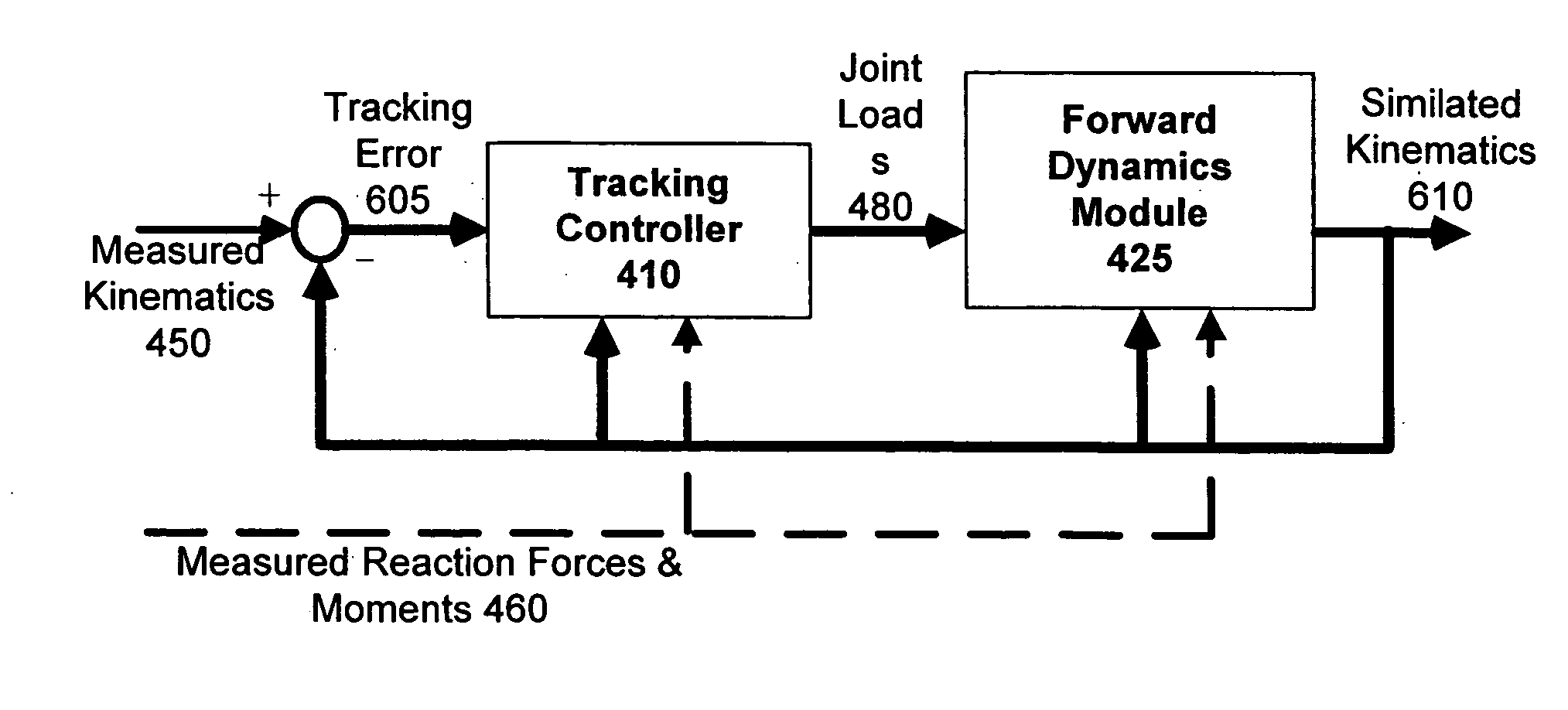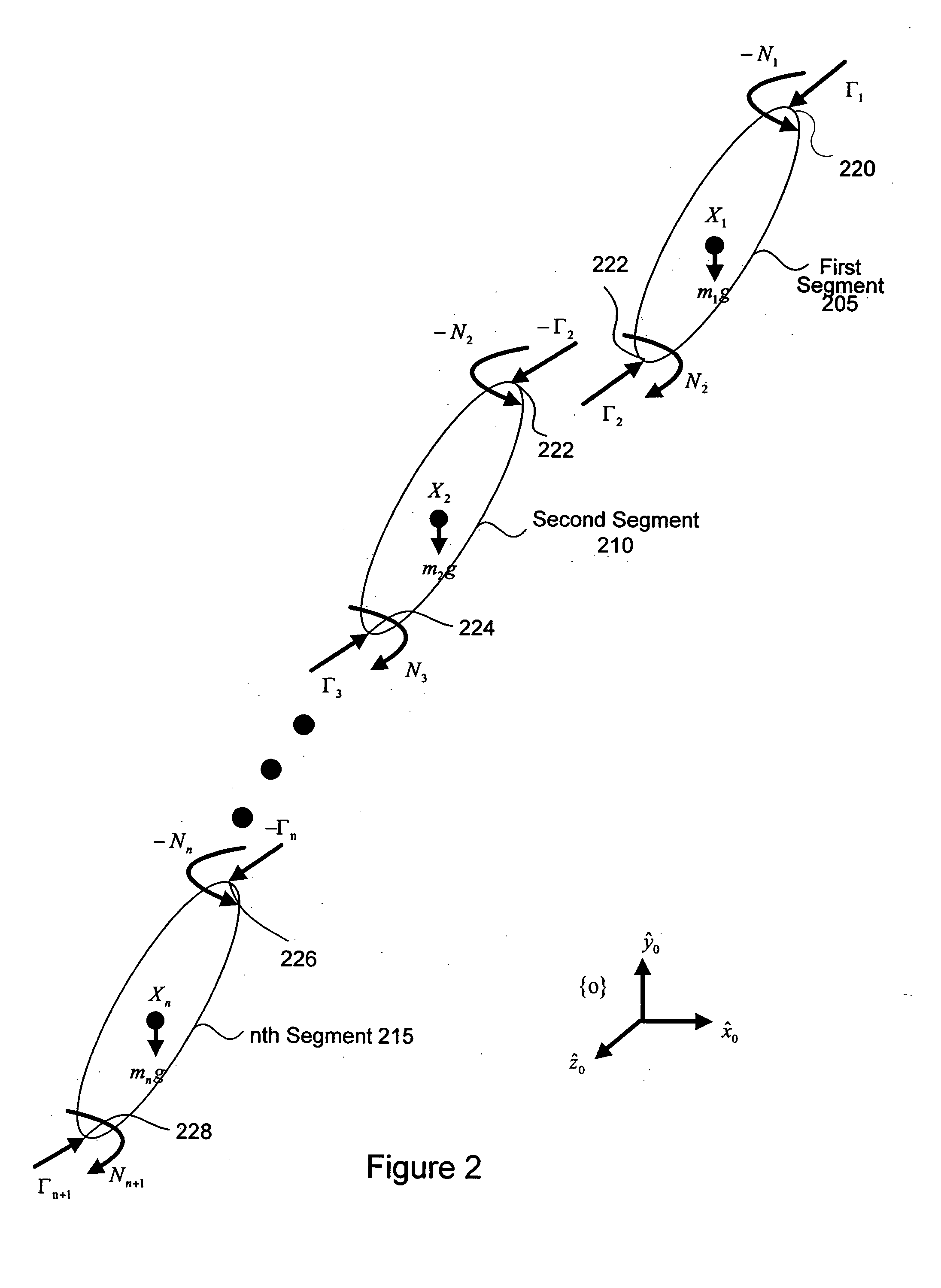System and method of estimating joint loads in a three-dimensional system
- Summary
- Abstract
- Description
- Claims
- Application Information
AI Technical Summary
Benefits of technology
Problems solved by technology
Method used
Image
Examples
Embodiment Construction
[0031] Various embodiments of the present invention provide for estimation of joint loads in multi-dimensional systems, for example estimation of joint loads in human beings. Various embodiments of the present invention also provide for prediction of motions such as prediction of human motion.
[0032] Various embodiments of the present invention include recursive dynamics, where joint loads are estimated iteratively from one segment to another, as well as closed form dynamics, where all joint loads are computed simultaneously. For example, the selection of a recursive embodiment versus a closed form embodiment may depend upon what sensors are available or on an application for which the invention is being used.
[0033] Embodiments of the present invention include open-chain systems and closed chain systems. In an open chain system, at most one end of the multi-body system is in contact with the environment. The other end or ends are free or unconstrained. In a closed chain system, mor...
PUM
 Login to View More
Login to View More Abstract
Description
Claims
Application Information
 Login to View More
Login to View More - R&D
- Intellectual Property
- Life Sciences
- Materials
- Tech Scout
- Unparalleled Data Quality
- Higher Quality Content
- 60% Fewer Hallucinations
Browse by: Latest US Patents, China's latest patents, Technical Efficacy Thesaurus, Application Domain, Technology Topic, Popular Technical Reports.
© 2025 PatSnap. All rights reserved.Legal|Privacy policy|Modern Slavery Act Transparency Statement|Sitemap|About US| Contact US: help@patsnap.com



